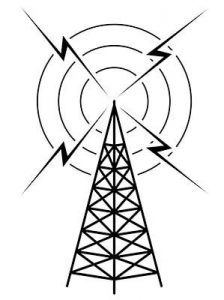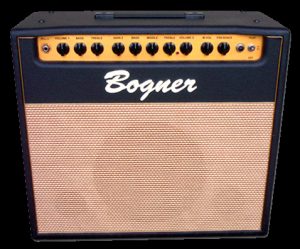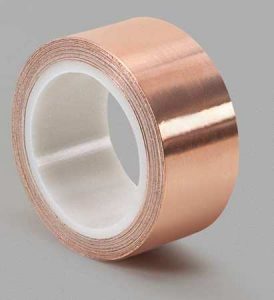HISS Most often encountered by high gain players
SOUNDS LIKE “shhhhhhhhhh”, a high-pitched white noise
 Guitar Noise Manual by PedalSnake®
Guitar Noise Manual by PedalSnake®
.
 Jody Page, PedalSnake’s inventor and lifelong pro guitarist, is an electrical engineer (a member of NASA’s Space Foundation Hall of Fame, no less) with special training in electrical noise. In the Guitar Noise Manual, Jody starts by breaking down guitar rig noise into 6 types:
Jody Page, PedalSnake’s inventor and lifelong pro guitarist, is an electrical engineer (a member of NASA’s Space Foundation Hall of Fame, no less) with special training in electrical noise. In the Guitar Noise Manual, Jody starts by breaking down guitar rig noise into 6 types:
1) BUZZ 2) HUM 3) HISS 4) DIGITAL NOISE (WHINE) 5) POWER SUPPLY NOISE 6) CABLE MICROPHONICS
For each noise, Jody explains its causes, then offers a targeted set of solutions. Also included are several helpful articles on general best-practices for noise reduction.
.
Dealing With HISS
Contents
If it DOES go away (when you turn the guitar down)
If it DOES NOT (go away when your turn the guitar down)
.
Before We Start…
.
 Make sure you have a good guitar cord
Make sure you have a good guitar cord
By good, we mean “not broken”. A simple jiggle test at both ends will usually tell you. Then consider…
.

Boosting your guitar signal
Right away this can strike a lethal blow to any noise that might crop up. Anyone and everyone should do it. See Improving Signal-to-Noise Ratio (SNR). With a hotter guitar signal, you can…
.
 Reducing your gain
Reducing your gain
Gain is not free. The more gain you have, from all pedals and amps, the more noise you will have. Amps at 11 can give you that extra edge, but you may be just as happy (and quieter) at 9.
.
So What’s the Deal With HISS?
Unlike HUM and BUZZ, HISS almost never comes from the AC power source. This makes it an easier problem to figure out.
HISS is usually related to smaller stuff…electronic noise. All audio gear has some degree of HISS. You just may not hear it until you turn it up loud enough.
As always, we can test for where hiss comes from. Is it:
conducted noise (comes through wires into your gear)
radiated noise (comes through the air into your ax pickups).
.
Hiss is most often conducted noise. But still, it doesn’t hurt to make sure.
How do you decide which it is? The solution is easy:
Does it go away when you turn the ax down?
.
If it DOES go away (when you turn the guitar down)
Then the HISS is radiated through the air into your pickups. (This is called EMI, or “electromagnetic interference”. Most likely, you are using single coil pickups and have a HISS noise-source nearby.
Radiated sources of HISS
 The most common HISS sources are digital equipment, like computers or TVs, or any other electronic device with high frequencies in its circuits.
The most common HISS sources are digital equipment, like computers or TVs, or any other electronic device with high frequencies in its circuits.
These may exhibit what we call HISS, or it may be more of a WHINE. A WHINE differs from HISS in that you can hear certain high pitched, constant tones, usually in a pretty dissonant, unmusical fashion.
HISS is more like white noise, with no discernible tones.
 But, to avoid interference with legit radio signals or other electronic gear, the FCC generally regulates the amount of high frequency noise that a device can put into the air. This is why, unless you stand very close to a noise source, external electronics are not usually the culprit when it comes to HISS problems.
But, to avoid interference with legit radio signals or other electronic gear, the FCC generally regulates the amount of high frequency noise that a device can put into the air. This is why, unless you stand very close to a noise source, external electronics are not usually the culprit when it comes to HISS problems.
Sniffing
 As with HUM and BUZZ, you can “sniff out” these kinds of HISS noise sources. Turn your amp and ax all the way up, and walk around, holding the pickups up near different “suspected sources of HISS” (this works best with single coils, not humbuckers).
As with HUM and BUZZ, you can “sniff out” these kinds of HISS noise sources. Turn your amp and ax all the way up, and walk around, holding the pickups up near different “suspected sources of HISS” (this works best with single coils, not humbuckers).
(Try this with a cell phone and single coil pickups. Place the phone right up against the pickups.)
If, for example, the HISS gets louder as get close to a TV, you have found a noise source.
Turn the TV off if you can (you can’t in most bars!), or just move away from it as much as possible.
If it DOES NOT (go away when your turn the guitar down)
This is the more likely scenario with HISS, and it means the HISS is NOT radiated through the air into your pickups. It is conducted, and it usually comes from the electronic circuits themselves.
There is no such thing as a “zero noise” audio device. Even passive components, like resistors and capacitors, have an inherent noise floor. High quality gear will contain more costly low-noise components.
Boost

The best (and easiest) thing to do to decrease any kind of noise is to increase your signal-to-noise ratio (SNR) by boosting your guitar’s signal.
See the PedalSnake article Improving Signal-to-Noise Ratio.
In fact, because HISS is generally electronic noise, with few other solutions, boosting signal is so important that we will keep reminding you as we go.
Once this is done, if you still have too much HISS, there are other issues to consider:
Noisy Pedals
 As with any audio device, all effects pedals have some noise. Try them one at a time to see how much noise each contributes.
As with any audio device, all effects pedals have some noise. Try them one at a time to see how much noise each contributes.
Again, to reduce any type of noise, the best (and easiest) thing to do is increase your signal-to-noise ratio (SNR) by boosting your guitar’s signal.
See the PedalSnake article Improving Signal-to-Noise Ratio.
If you max out your SNR, and still have annoying HISS, the next thing anyone should do, and this is good advice in general, it to put your noisiest pedals after any gain or boost devices. You don’t want to further boost the noise of noisy pedals.
 For example, analog chorus can be a particularly HISSY effect. Put a pedal like this after gain pedals like compression, overdrive, fuzz, etc. Digital choruses are generally quieter.
For example, analog chorus can be a particularly HISSY effect. Put a pedal like this after gain pedals like compression, overdrive, fuzz, etc. Digital choruses are generally quieter.

If you do this and still have too much HISS, you may just have to switch to better quality pedals, or replace an analog effect with a digital one.
You can also modify pedals by installing quieter components. Monte Allums has a great site for pedal mod kits, many of which reduce noise. We saw a dramatic reduction in HISS with his Boss GE7 EQ mod.
Noisy amp
 There is no such thing as an amp with zero HISS. Turned up loud enough, all amps will give off some amount of HISS.
There is no such thing as an amp with zero HISS. Turned up loud enough, all amps will give off some amount of HISS.
Again, boosting the guitar signal can help here. See Improving Signal-to-Noise Ratio (SNR).
 Better quality amps are generally quieter. They use more expensive, low noise components. If you max out your SNR, and still have too much HISS, a good tech may be able to help by modifying the amp.
Better quality amps are generally quieter. They use more expensive, low noise components. If you max out your SNR, and still have too much HISS, a good tech may be able to help by modifying the amp.
OR you may just need a better amp. Will all plan to upgrade some day, right?
.
Noisy power supplies
Not all power supply noise is the same. It depends upon the circuits in the supply. A noisy supply will most often BUZZ, but it can also cause HUM, HISS, or WHINE (like digital noise).
A noisy power supply can be caused by 4 things:
- A power supply not designed to be quiet for audio.
- A damaged power supply.
- An overloaded power supply.
- A power supply too close to a pedal.
For more, see our article Dealing With POWER SUPPLY NOISE.
Noisy guitar wiring (this is conducted!??)
 When noise DOES NOT go away when the ax is turned down, it is usually conducted noise.
When noise DOES NOT go away when the ax is turned down, it is usually conducted noise.
But not always.
It may be radiated noise that it gets into the guitar’s wiring, not the pickups. So the noise remains when you turn the ax down.
It may help some to rewire your pickups and pots in a more noise-proof fashion. Basically, you separate the chassis ground (strings and bridge), from the signal ground, and wire all the signal ground wires as a “star ground”. This may help even when the ax is turned all the way down.
It may also help a bit to shield the wiring cavity. This may help with noise when the ax is turned off, but also when it is turned up, especially with single coil pickups.
NOTE
How much improvement can be had by better wiring and shielding in a guitar is hard to know. The pickups will usually be worse noise antennas than the wiring. But if wiring is bad enough, or has some bad grounds, it may be worth looking into.
But beware, before you go to a lot of trouble and expense, rewiring and shielding may result in only marginal improvements, or none at all. And it can be hard to tell. These changes can be rather time consuming to do, so by the time you are done, it may be hard to remember the previous noise level. So you are unsure of how much it helped.
Now, if we could test 2 identical guitars, one with improved wiring and shielding, we may learn more. If anyone has done this, and can report on an A/B comparison, please let us know. We have never seen a report like this (which makes you wonder).
All we know is that some “experts” out there (who are often folks trying to sell you stuff) often claim that rewiring and/or shielding will produce amazing results (to use a word that has been stripped of its meaning).
Let’s just say we have a healthy skepticism here as to how much difference these efforts make.
But we also say, when it comes to noise, every little bit helps.
.
One way to know if rewiring and/or shielding will help is this:
.
- With no pedals involved, just the guitar and amp, turn the amp up to get a healthy level of noise.
- Then turn the guitar down. If the noise goes down, but is still there, then unplug the guitar from the amp.
- If the noise goes down more, then some of the noise is probably getting in via “receiving antennas” in your guitar wiring, and not just through the pickups.
These are often considered “RF ground loops”. These are different from what we normally refer to as a “ground loop” of AC currents.
.
Due to cost, or lack of know-how, guitar manufacturers often do not optimize this properly, so it may help to rewire and/or shield your guitar’s wiring cavity.
 There are some excellent online guides about how to improve the wiring in Strats and other guitars. Stewart-MacDonald has some nice kits for shielding the wiring cavity in your guitar.
There are some excellent online guides about how to improve the wiring in Strats and other guitars. Stewart-MacDonald has some nice kits for shielding the wiring cavity in your guitar.
Copper tape makes a better shield than tapes of aluminum or other metals. Not only is copper is a better conductor; i.e., a better shield, but it can often be soldered to itself along edges to make a more “solid” shield.
.
